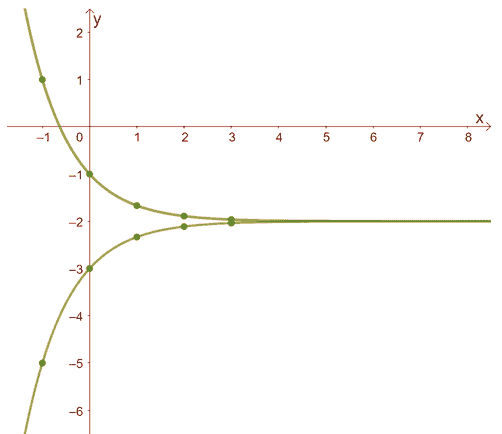Adblocker Detected

We always struggled to serve you with the best online calculations, thus, there's a humble request to either disable the AD blocker or go with premium plans to use the AD-Free version for calculators.
Disable your Adblocker and refresh your web page 😊
Table of Content
Our Radius of convergence calculator is specially designed to calculate the radius of convergence of any given power series.
In mathematics, convergence is defined as:
“A property that is used to approach a limit more and more absolute as the variable of the function increases or decreases or as the number of the terms of the power series increases”.
For example;
Consider the function below;
$$ y=\frac{1}{x} $$
This function converges to zero when we keep on increasing the value for x. Although it is jot possible to make y exactly zero, the limiting value of y approaches zero because we can make y as small as we can by choosing the large values of x.
In convergent series, for any value of x given that lies between -1 and +1, the series 1 + x + x2 +⋯+ xn always tend to converge towards the limit 1 / (1 -x) as the number of the terms (n) increases. You can determine radius of convergence of a convergent series by using free online radius of convergence calculator
Before we move on, let us see how the terms of convergent series appear on a graph.

By visualizing the above graph, we see that as the number of the terms increases, the partial sum of the series approaches a certain number.
For example:
Let us take a convergent series as follows:
1 / 2 + 1 / 4 + 1 / 8 + 1 / 16 + 1 / 32 + 1 / 64 + ……..
Let’s see how the sum progresses as we add more terms:
| Terms | Sum |
| 1 / 2 | 1 / 2 = 0.5 |
| 1 / 2 + 1 / 4 | 3 / 4 = 0.75 |
| 1 / 2 + 1 / 4 + 1 / 8 | 7 / 8 = 0.87 |
| 1 / 2 + 1 / 4 + 1 / 8 + 1 / 16 | 15 / 16 = 0.93 |
| 1 / 2 + 1 / 4 + 1 / 8 + 1 / 16 + 1 / 32 + 1 / 64 | 63 / 64 = 0.98 |
From this, we can say how convergent series approaches a certain value when we keep on adding the partial terms one by one.
For a power series, the interval -1 < x < +1 is called the range of convergence or interval of convergence of the series. If the value of x goes beyond this range, the series is said to be divergent.
For example:
$$ \sum_{n=0}^∞ x^n=1+x+x^2+x^3+x^4+…. $$
For the above power series, when we put x = 0, the series calculates to 1 + 0 + 0 + 0 + 0 + … and converges at 1 and does not exceed the series beyond 1 as it will make the series divergent.
However, the online radius and interval of convergence calculator finds the range of series for which it converges.
When a power series converges at some interval then the distance from the center of convergence to the other end is known as the radius of convergence. You can use our free online radius of convergence calculator to accumulate the radius of a given Taylor series.
Ratio test is one of the tests used to find the convergence, divergence, radius of convergence and interval of convergence of a power series.
$$ L=\lim_{n \to \infty} \frac{a_{n+1}} {a_n} $$
Let us solve an example to understand how to determine the radius of convergence:
Example # 01:
Find the radius of convergence, r, of the series below.
$$ \sum_{n=1}^\infty\frac{\left(x-3\right)^{n}}{n} $$
Solution:
Let us suppose that:
$$ C_{n}=\frac{\left(x-3\right)^{n}}{n} $$
The above series will converge for x = 3.
Now, we have to use the ratio test to find the radius of convergence of the power series
$$ L= \lim_{n \to \infty}\frac{\left(x-3\right)^{n}}{n} $$
$$ L= \lim_{n \to \infty}[\frac{\left(x-3\right)^{n+1}}{n+1}* \frac{n}{\left(x-3\right)^n}] $$
$$ L= \lim_{n \to \infty}[\frac{\left(x-3\right)^{∞+1}}{∞+1}* \frac{∞}{\left(x-3\right)^∞}] $$
$$ L=\lim_{n \to \infty}[\frac{\left(x-3\right)^{1}}{1}* \frac{∞}{\left(x-3\right)}] $$
$$ \left|x-3\right| $$
Now, this series will only converge if x-3 < 1. Otherwise for x-3 > 1, the series diverges.
So, the radius of convergence is 1.
Now, by taking any of the above inequalities, we can determine the interval of convergence.
$$ \left|x-3\right|≤1 $$
$$ -1<\left|x-3\right|<1 $$
$$ -1+3<x<1+3 $$
$$ 2<x<4 $$
Which is the interval of convergence for the given series.
You can simplify any series by using free radius of convergence Taylor series calculator.
If you want to determine the radius of convergence using free online power series solution calculator, then you have to follow the following steps.
Input:
Output:
For power series entered, the calculator calculates:
The radius of convergence gives us half the length of the interval of convergence.
We can only calculate the radius of convergence to be infinite if the series converges for all complex numbers z.
The root test is a simple test that tells us that the series definitely converges to some value.
When the power series converges at a single point, then we can say that the radius of convergence is zero.
Yes, the radius can be negative, which means that it is measured on the opposite side of a side of the circle. Also, a circle having a zero radius is just a single point. Finding radius of convergence will provide you with a way to determine the radius of the given power series.
Radius of convergence is actually the distance from the middle of the power series to the end points. Every power series is a Taylor series, but it should be kept in mind that Taylor series are associated to a function that is absolute. If the function is not absolute, then we can say that we are dealing with a power series. Using our online radius of convergence calculator helps you to evaluate on how many points in a interval the series is converging.
From the source of wikipedia: Theoretical radius, Convergence on the boundary, Rate of convergence, Abscissa of convergence of a Dirichlet series.
From the source of tutorial. Math: Proof of Ratio Test, Ratio Test
From the source of lumen learning: Indexing, The Integral Test, Comparison Tests, Alternating Series, Root Test, Taylor and Maclaurin Series.